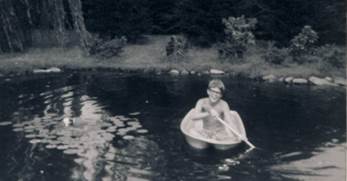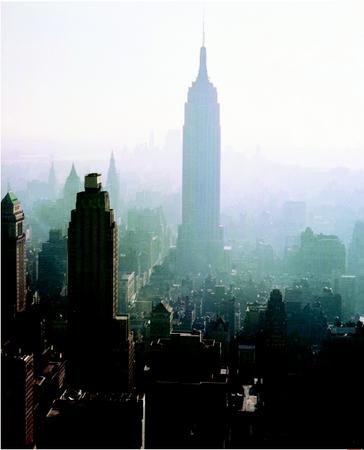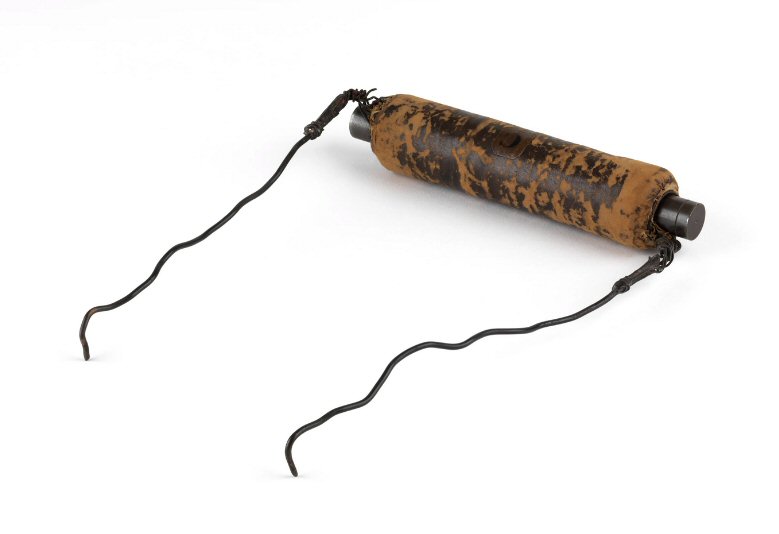
About Us | |
|
First electrical experience took cues from the mouths of pet dogs. Having desire, but toddler hands, teeth were utilized for removing an electrical plug from wall socket. Thrown across the room, by shocking salivary conduction and buzzed muscle, temporary fat lips impressed permanent consideration of electricity and water interaction. Walk ten cents one mile, down the wooded hill path, and return with paper bag containing nine penny candies or four and a nickel chocolate bar. 1960’s youngster scruples forbade throwing down even a single "Atomic Fireball” wrapper. The shiny plastic was alien to nature. Unaware of persistent local influences descended from whaling industry and Standard Oil roots, every time going the longer Shore Road past beach and hillside free-flowing cold spring water pipe, mind wondered why a petroleum distribution terminal existed at such beautiful harbor spot. Fifty years later, large storage tanks were removed, soil remediated, and a beach park is established. Yet childhoods’ Xiphosura horseshoe crab armies did not return. Harbor head laboratory visits, where the double helix shape of DNA was uncovered, frequently appeased playgroup or lone curiosity about shoreside biology. BC “Before Computer” captivations preceded the AD “After Digital” world. “Power Fuel Pellets” marginally propelled neutrally buoyant "Power Sub” toy submarines. Tub and pond ripples rocked battery powered boat models. “Tip-It” games instructed offset loads balancing. "Rock ‘Em Sock ‘Em Robots” rack, pawl, and trip-spring ratchet head pop determined the loser. A book-writing grandfather, directly above, endured basement reciprocating pogo stick springy noise and whirring workbench grinding wheel. Slow and faster handle rotation through gearing induced high wheel velocity. Letting go or turning handle the opposite direction disengaged a clutch so continuing wheel rotation- a “flywheel effect” more momentous than turning upside-down bicycle chain wheel pedals. Science class impressed frog and fetal pig dissections, magnets, motor kits, and structural failure movies. Visceral influences remain from viewing 1937’s “Oh, the humanity”, as diesel and hydrogen combustion eviscerated the Hindenburg airship, and the 1940 Tacoma Narrows bridge over-resonation. "Bert the Turtle", and his 1951 Civil Defense Administration handlers, educated about how to “duck and cover” in the event of local atomic bomb detonation.
With sketchbook and R. Buckminster Fuller’s “Synergetics” opus always at hand, 1978, influential lessons applied to 20 year old architecture student developing interests in kinematic constructions. RISD Rhode Island School of Design architecture and structural engineering Professor Wilbur Yoder initiated cooperative effort with URI-OE University of Rhode Island ocean engineering Professor Tadeusz Kowalski and students. The "Ocean Habitat" studio focused on designing living and research structures at shore, to deeper ocean, above or about hydroface, and in submerged environs of the water column to seafloor. Perceived was need for developing local power. Beyond basic physical considerations and examples of ocean industry, the Professors described minerals mining, minimal state-of-the-art efforts in the nascent marine renewable energy field, and possible hydrogen production from seawater. Effects of sea level lowering were considered, as result of liquid processing to gases, despite some water displacement offsets from floating technology installations. Ocean energy device penetration paled in such vast realm. Then, “SLR” acronym commonly referred to single lens reflex film cameras. By 1990's the expression began wider association to sea level rise. BC, persistently trying to break from 45°/45°/90° static block building archetypes, ocean realm invited heavy use of 30°/60°/90° drafting triangles to explore circle-sphere based geometries. Reduced gravity induces omnidirectional growth patterns. From diatomic “seed” and species, all manner colorful and wondrously radiating outbursts demonstrate nature’s elegant water world creations. Sphere encloses most volume with least surface area. Tetrahedron, comprising four edge-connected equilateral triangles, has least volume with most surface area. Of water, itself, thermally affected H2O molecules simply portray as two sides of a triangle having two H hydrogen atoms that bond one O oxygen. In liquid state, diametrically paired elements can be interpreted to resemble jiggly proton and electron sharing tetrahedrons. Closest packed paired H2O molecule groups equally form slippery layers of interstitial octahedrons that fill liquid space. From 1979 paper, “In its purest form, water is a compound of hydrogen and oxygen atoms. These atoms are attracted to one another because their union nearly satisfies an otherwise insatiable desire for molecular stabilization. Each to themselves is a lonely hunter- oxygen has only six electrons in its outer orbit but desires eight electrons. Hydrogen has but one electron. Therefore, by cooperatively overlapping its electron orbits with those of two hydrogen atoms, the oxygen atom approaches stabilization. However, stabilization will not occur due to the need for two additional electrons above and beyond what hydrogen supplies- for these electrons still "belong" to the hydrogen atom. What ensues is a dancing interaction of electrons like the cogs of meshing gears. Both hydrogen and oxygen attempt to "short-change" one another, but each is as much a failure in this quest as it is a success. Thus water remains a delicately balanced yet turbulent liquid- neither gas nor solid”. Basic electrolysis introduces additional electrons that cut into the dance. Bonds satiated, hydrogen and oxygen dissociate to electricity’s anode and cathode corners and can be accumulated. Sketches explored floating wind energy converters. Self-organizing building constructions also were examined. Arranged in shapes resembling octopus, photosynthetically activated spheres would interconnect with organically fused mechanical parts, bio-mimicking muscle and bone tissue, that electrochemically contract or expand for swimming, standing, diving, or bottom walking. Seawater-ballasted variable buoyancy engines keep research spheres stationed at depths and heights of investigative interest. Though technologically unavailable, in 1978, basic research disclosed water waves nature. Layperson books “Waves and Beaches”, by Willard Bascom, and “Oceanography- Second Edition”, by Dr. M. Grant Gross, simply explain water and ocean processes. One diagram, showing attenuation of water particle orbital motions correspondent to depth, recalled Hawaii bodysurfing memories. Calmer regions accommodate self-stabilized components. Simple beginnings rendered preliminary design drawings of the first named OWEC® and "Ocean Wave Energy Converter".
Newsletter |
 Ripples of water wave familiarity imbibed swimming, standing on submerged horizontal kickboards then observing their shimmying ascent to hydroface (water hydrogen/oxygen - air oxygen interface), and tiny plastic boat mucking about in pond water while mesmerized by friendly Terrapene box turtle buoyancy control. Early wave encounters accompanied running on rocking finger piers, canoeing, sailing in beamy Woodpussy or cutting Blue Jay, rafted-up relative motions, skiing along chop waters, and small power boat wave surfing to save petroleum. At the gas dock, occasional drippings dispersed spellbinding kaleidoscopic water colors and attractive foul smells that felt innately wrong- like candy wrapper litter. Way forward in the bow of an Atlantic sailboat, where isolated from grandfather’s frantic racing crew, slamming shook and rolled below deck. There, like a carnival ride, young bones gleefully absorbed heaving fiberglass hull impacts. Hydroface rocked leaky dinghies adrift and reciprocating hand pumps were essential equipment. Wave powered versions were pondered and, decades later, used at mooring for expelling water from a tired Beetlecat wood sailboat- similar in size and displacement to one half of a sideway, smallest OWEC® buoy.
Ripples of water wave familiarity imbibed swimming, standing on submerged horizontal kickboards then observing their shimmying ascent to hydroface (water hydrogen/oxygen - air oxygen interface), and tiny plastic boat mucking about in pond water while mesmerized by friendly Terrapene box turtle buoyancy control. Early wave encounters accompanied running on rocking finger piers, canoeing, sailing in beamy Woodpussy or cutting Blue Jay, rafted-up relative motions, skiing along chop waters, and small power boat wave surfing to save petroleum. At the gas dock, occasional drippings dispersed spellbinding kaleidoscopic water colors and attractive foul smells that felt innately wrong- like candy wrapper litter. Way forward in the bow of an Atlantic sailboat, where isolated from grandfather’s frantic racing crew, slamming shook and rolled below deck. There, like a carnival ride, young bones gleefully absorbed heaving fiberglass hull impacts. Hydroface rocked leaky dinghies adrift and reciprocating hand pumps were essential equipment. Wave powered versions were pondered and, decades later, used at mooring for expelling water from a tired Beetlecat wood sailboat- similar in size and displacement to one half of a sideway, smallest OWEC® buoy. 
 In 1831, Michael Faraday first
In 1831, Michael Faraday first